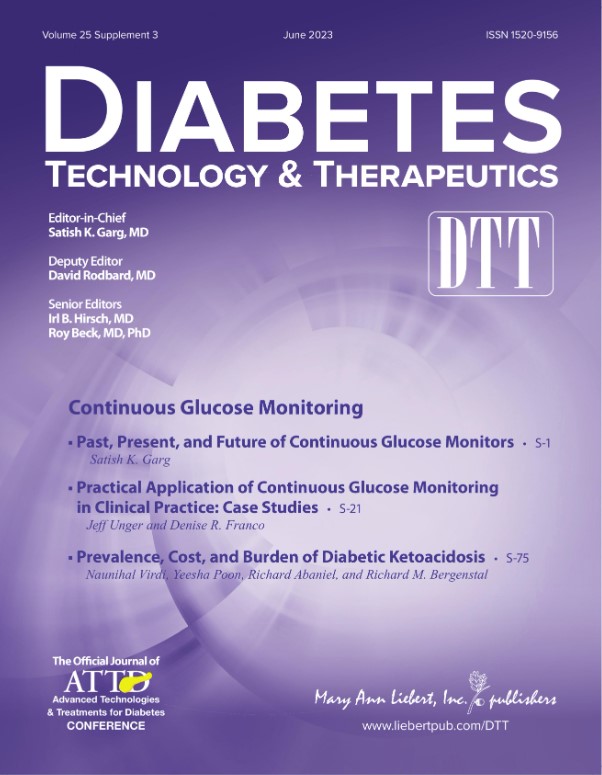Featured
As many health plans transition to a value-based diabetes care approach, there is a need for standardized quality measures to assess and benchmark performance. This article addresses key topics to support the adoption of continuous glucose monitoring (CGM) technology in these efforts.
- Transition from Fee-for-Service to Value-Based Care
- Integration of Glucose Management Indicator (GMI) into 2024 NCQA HEDIS Measures
- Impact of CGM on Health Plan Quality Scores & Reimbursement
- Call for Health Systems and Plans to Collaborate with Electronic Health Record Developers
A retrospective claims analysis of 74,679 adults with T2D showed significant reductions in all-cause hospitalizations, acute diabetes-related hospitalizations, and acute diabetes-related emergency room visits associated with CGM use. These sizeable reductions in health care resource utilization were observed in patients treated with non-insulin therapy (NIT; -10.1%, -31.0%, -30.7%), basal insulin therapy (BIT; -13.9%, -47.6%, -28.2%), and prandial insulin therapy (PIT; -22.6%, -52.7%, -36.6%, respectively) across the 6 to 12 month post-index period. Mean HbA1c was likewise reduced across all treatment types at approximately 3 months and sustained throughout the post-index period (NIT, -1.1%; BIT, -1.1%; and PIT, -0.9%; P< 0.0001).Study authors noted that these findings support expanded coverage of CGM use for people with T2D regardless of treatment type to improve glycemic control and reduce hospitalizations and overall health care costs. Furthermore, the study suggests that managed care and payer decision makers can benefit from consideration of CGM use in patients with T2D who are often ineligible for coverage as a means of managing the total cost of care.
Garg SK, Hirsch IB, Repetto E, Snell-Bergeon J, Ulmer B, Perkins C, Bergenstal RM. Impact of continuous glucose monitoring on hospitalizations and glucose control in people with type 2 diabetes: real-world analysis. Diabetes Obes Metab. September 12, 2024. doi: 10.1111/dom.15866. Epub ahead of print.
Learn MoreAmong 47 patients enrolled in a cardiovascular disease (CVD) outpatient program, CGM use was associated with improved glycemic and cardiometabolic outcomes. In the two-phase crossover study, participants were required to have T2D not treated with insulin therapy, an HbA1c >7%, and an obesity classification (BMI ≥30 kg/m2). Through 90 days of follow-up, CGM use was associated with a reduction in average glucose (184.0 to 147.2 mg/dL, P<0.001), an increase in time in range (57.8 to 82.8%, P<0.001), and a trend towards lower glycemic variability (26.2% to 23.8%). CGM users also experienced significant reductions in HbA1c, body mass index (BMI), triglycerides, blood pressure, total cholesterol, diabetes distress, and 10-year predicted risk for atherosclerotic cardiovascular disease (P<0.05 for all). These findings are pertinent to managed care and payer professionals seeking to better manage outcomes in T2D with comorbid CVD in health plan populations.
Reed J, Dong T, Eaton E, Friswold J, Porges J, Al-Kindi SG, Rajagopalan S, Neeland IJ. Continuous glucose monitoring for glycaemic control and cardiovascular risk reduction in patients with type 2 diabetes not on insulin therapy: A clinical trial. Diabetes Obes Metab. 2024 Apr 28. doi: 10.1111/dom.15608. Epub ahead of print.
Learn More
Prescribing of CGM in clinical practice and payer coverage criteria have expanded considering the wealth of evidence and expert recommendations supporting more widespread use. As the body of evidence continues to grow, a new supplement in Diabetes Technology & Therapeutics offers insights from leading clinicians on the latest findings and practical application of CGM. The supplement highlights real-world evidence and the unique role of CGM in the management of hypoglycemia and enhancing behavior modification among users of the technology. Special consideration is given to the economic impact of CGM and access issues that may be of particular interest to payer and managed care decision makers.
The articles included:
Past, Present, and Future of Continuous Glucose Monitors Satish K. Garg
Continuous Glucose Monitoring Impact and Implications of Real-World Evidence: Past, Present and Future James R. Gavin III and Clifford J. Bailey
What Role Might There Be for Continuous Glucose Monitoring in the Assessment of Diabetes Risk? Eden Miller, William H. Polonsky and Kevin Miller
Practical Application of Continuous Glucose Monitoring in Clinical Practice: Case Studies Jeff Unger and Denise R. Franco
Advancements in Diabetes Technology Are Outpacing the Evidence Michael Rickson, Eugene E. Wright Jr., Anila Bindal and Laith Ghonim
One Size Fits All Versus Individualized Medicine in Type 1 Diabetes Management L. Kurt Midyett
Is Continuous Glucose Monitoring a Tool, an Intervention, or Both? Eugene E. Wright Jr. and Savitha Subramanian
Continuous Glucose Monitoring Use in Older Adults for Optimal Diabetes Management Medha N. Munshi
Personalized Glycated Hemoglobin in Diabetes Management: Closing the Gap with Glucose Management Indicator Timothy C. Dunn, Yongjin Xu, Richard M. Bergenstal, Watru Ogawa and Ramzi A. Ajjan
Prevalence, Cost, and Burden of Diabetic Ketoacidosis Naunihal Virdi, Yeesha Poon, Richard Abaniel and Richard M. Bergenstal

Source: The Journal of the American Medical Association
Authors: Monica E. Peek, MD, MPH, MS; Celeste C. Thomas, MD, MS
“…the studies by Karter et al. and Martens et al. provide additional evidence that patients with type 2 diabetes benefit from the use of CGM in terms of improved HbA1c level, time spent in the target blood glucose range, and reduced hypoglycemic episodes…”
“…institutional changes that promote its use in primary care will go a long way to improving diabetes control and reducing complications, particularly among the populations most in need. The time has come to broaden access to CGM for patients with type 2 diabetes.”
Learn More
- 1
- 1-6 of 6 results